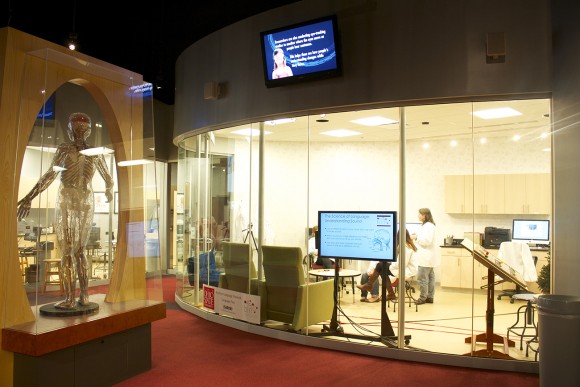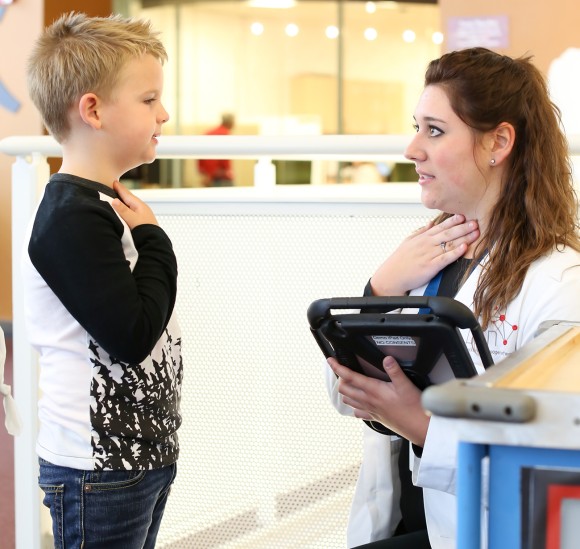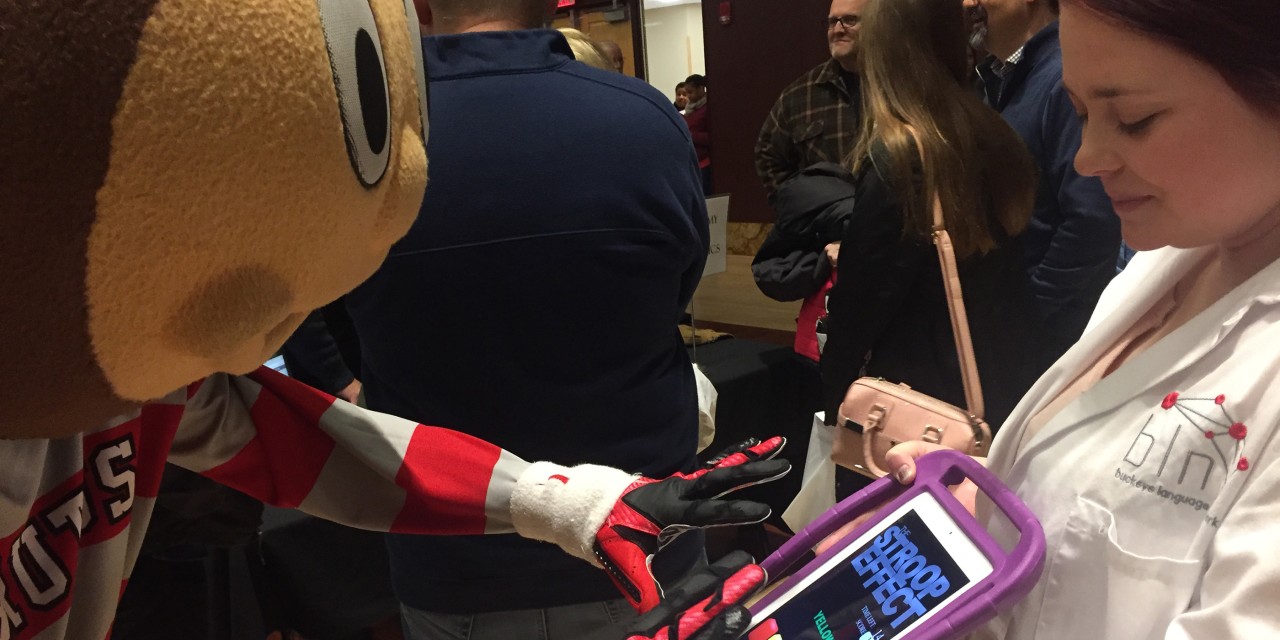In a glass enclosure called the Language Pod at Columbus, Ohio’s Center of Science and Industry (COSI), Ohio State University faculty and students are working together across disciplines to advance—and to demystify—language research. Led by Laura Wagner, the Language Pod is both an active research lab and a forum for engaging the museum’s diverse visitors. Inside the Pod, visitors can contribute to faculty and student research. Outside the Pod, visitors can watch and participate in student-led engagement activities that explain what is happening inside the Pod and introduce diverse topics in language research: learning about everything from the mechanics of language production to English morphology—the study of the forms of words.

The Language Pod is an initiative of the interdisciplinary Buckeye Language Network, which brings together faculty, scholars, and students from the sciences and the humanities. It engages approximately 3,000 visitors every year as participants contributing to language research. Wagner estimates that outreach activities on the floor outside the Pod reach 30,000-40,000 visitors per year.
Research in the Language Pod
Research in the Pod encompasses a range of work in humanistic, social scientific, and scientific linguistics, highlighting the complementarity of diverse approaches to language.
“One study that I have been involved in looks at how children learn to develop a range of skills about regional dialects,” Wagner explains. “When can they actually tell that someone is not from here? How well can they understand the words that [speakers] say and how do we judge them?”
“Our number one goal for all of this is that people should walk away thinking language is cool”
“In the English Department, one of our faculty members spent last summer doing a study looking at teenagers and how they use their cellphones to communicate,” Wagner explains. “It’s interesting work into how technology shifts the way people are interacting in a social communicative sense.”

To recruit participants, all the Pod researchers have to do is ask.
“We have our glass enclosed space, people can see us,” Wagner explains. “We send students out onto the floor of the museum. They go just outside of the lab area and they walk up to people and say, ‘Hi, I’m from Ohio State. We’re doing a research study, would you like to participate?’ And people say ‘yes.’”
Outreach in the Language Pod
Outside the Language Pod, Wagner explains that undergraduate students interact with visitors.
“One of the things we realized early on is COSI is a museum and we are an exhibit. In their ideal world, we would be open for business and doing things every moment that the museum is open. That’s a lot of research. It’s more research than we can handle, even with a dozen faculty members doing projects.”

To address this need, Wagner and the Buckeye Language Network developed an undergraduate course that trains students to do informal science outreach. “Then we put students on the floor doing interactive activities with the public,” Wagner explains. The class’s capstone involves the development of new language outreach activities for the Language Pod—games or educational slides—some of which come to be incorporated into its regular programming.
Impact on Students and Visitors
This experience is beneficial for students and visitors. Students gain experience in public speaking and a genuine appreciation for the importance of engaging the public.
“They have to talk to parents, children, and grandparents,” Wagner explains. “They have to talk about something sort of technical. It’s not just chatting, it’s… about what morphology in English looks like. That’s what the course is really about, training students to be able to talk about complicated stuff with the public.”
Visitors learn about language and about language research, demystifying what might otherwise seem complex and out of reach.
“Our number one goal for all of this is that people should walk away thinking language is cool,” Wagner explains. “We want to engage and promote excitement and interest in a general sense.”
